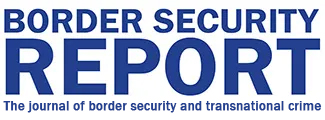Solving Border Control Staffing Challenges: Regula Launches an Ecosystem for Remote Document Examination
Regula introduces an innovative solution designed to transform document examination processes, particularly in border control operations. Based on high-resolution photospectral scanners from the Regula 88XX product line, it enables highly accurate and reliable remote document authentication, effectively addressing the pressing issue of staffing shortages in border security.
Traditionally, document authenticity experts needed to be physically present at each checkpoint. However, this requirement has become increasingly challenging due to current staffing constraints. For example, a recent European Commission report highlights gaps in the availability of certain specialized experts, notably advanced-level document officers (ALDOs), within the Schengen area’s standing corps. The report states that this gap could be fixed with long-term recruitment and training efforts on the pan-European level. However, Regula suggests a faster and more cost-effective solution.
Regula 88XX high-resolution photospectral scanners introduce a conceptual shift in second-line border control operations. With these devices, a single professionally trained expert can conduct comprehensive document examinations remotely, responding to requests from border officers at various geographic locations. This approach significantly enhances the efficiency and speed of border control operations.
The Regula 88XX line comprises four scanners that differ in functionality. For example, the most powerful model, the Regula 88100, is equipped with a 400-megapixel camera, delivering unmatched high-resolution images of up to 4380 ppi with a single button press. This allows detailed examination of identity and travel documents, capturing intricate features such as microprinting, holograms, watermarks, etc. The device supports 16 types of light sources, including incident, oblique, coaxial, transmitted, and high-intensity infrared in different spectral ranges. This ensures comprehensive analysis under various lighting conditions.
All Regula 88XX scanners are paired with a platform-based operating software that forms a unified ecosystem for remote document verification. Upon checking document features and getting high-resolution images of them with any Regula 88XX device, a border control officer can send a link to all the obtained data to remote forensic experts right from the software. This built-in feature ensures that even the most complex cases can be analyzed by top-tier professionals without needing to be physically present at checkpoints or transferring large data files.
The software that empowers Regula 88XX devices allows document examination experts to access and operate the devices remotely, perform automated checks, and instantly assess results. The system also performs initial automated authenticity verification, flagging potentially suspicious documents for further expert analysis before escalation.
“We developed this solution specifically to meet the growing need for remote forensic capabilities. With the Regula 88XX, experts no longer need to be everywhere at once. They can access high-resolution images from any location in real time, enabling faster and more precise decisions. Moreover, this solution not only addresses staffing challenges but also elevates the overall security of border crossings by ensuring consistent and thorough document verification processes,” says Alex Lewanowicz, Director of Hardware Engineering at Regula. Beyond border control, the capabilities of Regula 88XX scanners are invaluable for any organization requiring high-precision document authentication, such as forensic laboratories, law enforcement agencies, security printing manufacturers, and financial institutions. For example, these institutions can employ any Regula 88XX device to create custom image reference databases: by capturing ultra-detailed document images in various light modes, they can build their own localized or use-case-specific reference collections.




